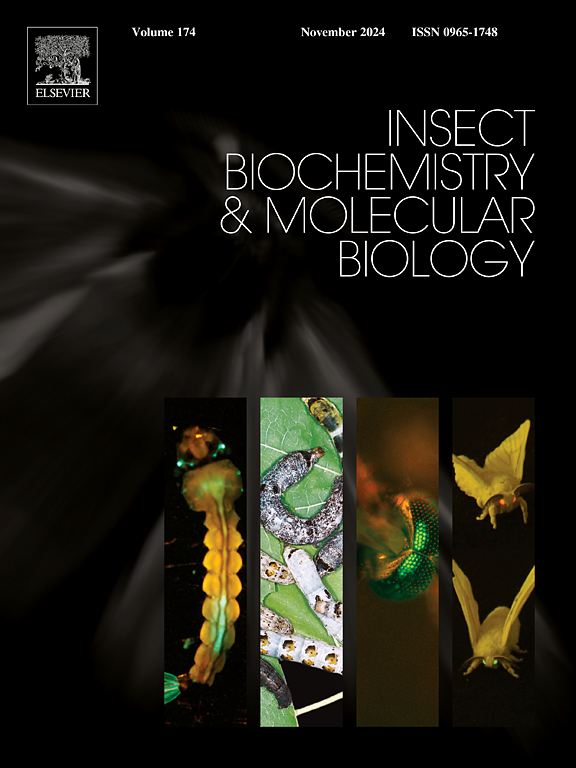Genome editing in hymenoptera
IF 3.7
2区 农林科学
Q2 BIOCHEMISTRY & MOLECULAR BIOLOGY
引用次数: 0
Abstract
The application of genome editing tools in Hymenoptera has transformative potential for functional genetics and understanding their unique biology. Hymenoptera comprise one of the most diverse Orders of animals, and the development of methods for efficiently creating precise genome modifications could have applications in conservation, pest management and agriculture. To date, sex determination, DNA methylation, taste and smell sensory systems as well as phenotypic markers have been selected for gene editing investigations. From these data, insights into eusociality, the nature of haplodiploidy and the complex communication systems that Hymenoptera possess have provided an understanding of their evolutionary history that has led them to become so diverse and successful.
Insights from these functional genetics analyses have been supported by the ever-improving suite of CRIPSR tools and further expansion will allow more specific biological hypotheses to be tested and applications beyond the lab. Looking ahead, genome editing tools have potential for Hymenopteran applications in modifying biocontrol agents of agricultural pests and for use in managing invasive species through the development of technologies such as gene drives. This review provides accessibility to information regarding the status of Hymenopteran genome editing, intending to support the considered development of CRISPR tools in novel species as well as innovation and refinement of methods in species in which it has already been achieved.

膜翅目昆虫的基因组编辑
基因组编辑工具在膜翅目昆虫中的应用对功能遗传学和了解其独特的生物学具有革命性的潜力。膜翅目昆虫是最多样化的动物目之一,有效地创造精确的基因组修饰的方法的发展可能在保护、害虫管理和农业方面有应用。迄今为止,性别决定、DNA甲基化、味觉和嗅觉感觉系统以及表型标记已被选择用于基因编辑研究。从这些数据中,我们了解了膜翅目昆虫的群居性、单倍体的本质和复杂的交流系统,从而了解了它们的进化史,正是这些进化史使它们变得如此多样化和成功。从这些功能遗传学分析中获得的见解得到了不断改进的CRIPSR工具套件的支持,进一步的扩展将允许更具体的生物学假设得到测试,并在实验室之外得到应用。展望未来,基因组编辑工具有潜力在膜翅目昆虫中应用于修改农业害虫的生物防治剂,并通过开发基因驱动等技术用于管理入侵物种。本综述提供了有关膜翅目昆虫基因组编辑现状的信息,旨在支持在新物种中考虑开发CRISPR工具,以及在已经实现的物种中创新和改进方法。
本文章由计算机程序翻译,如有差异,请以英文原文为准。
求助全文
约1分钟内获得全文
求助全文
来源期刊
CiteScore
7.40
自引率
5.30%
发文量
105
审稿时长
40 days
期刊介绍:
This international journal publishes original contributions and mini-reviews in the fields of insect biochemistry and insect molecular biology. Main areas of interest are neurochemistry, hormone and pheromone biochemistry, enzymes and metabolism, hormone action and gene regulation, gene characterization and structure, pharmacology, immunology and cell and tissue culture. Papers on the biochemistry and molecular biology of other groups of arthropods are published if of general interest to the readership. Technique papers will be considered for publication if they significantly advance the field of insect biochemistry and molecular biology in the opinion of the Editors and Editorial Board.

 求助内容:
求助内容: 应助结果提醒方式:
应助结果提醒方式:


